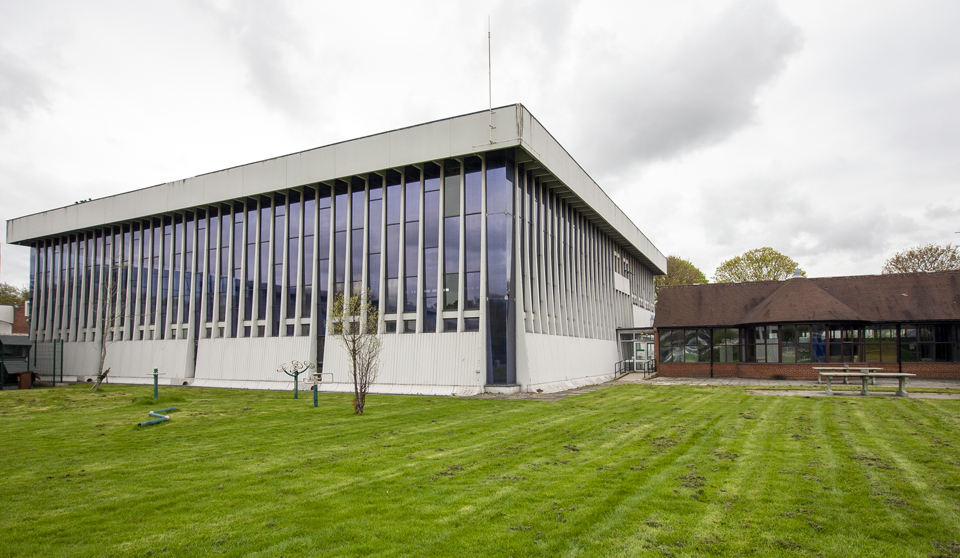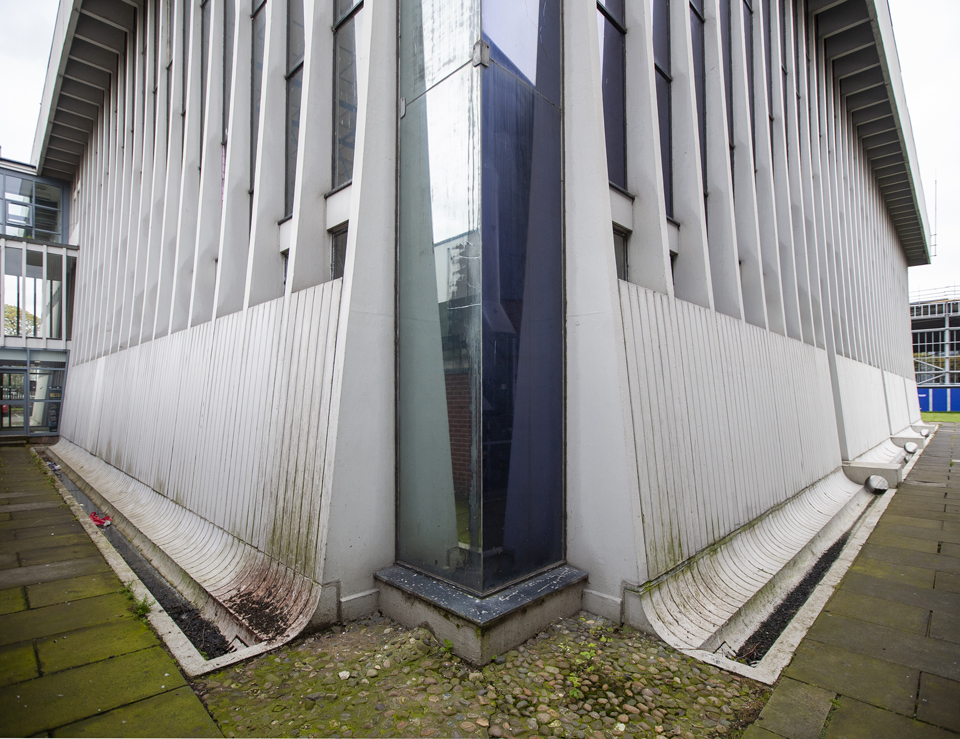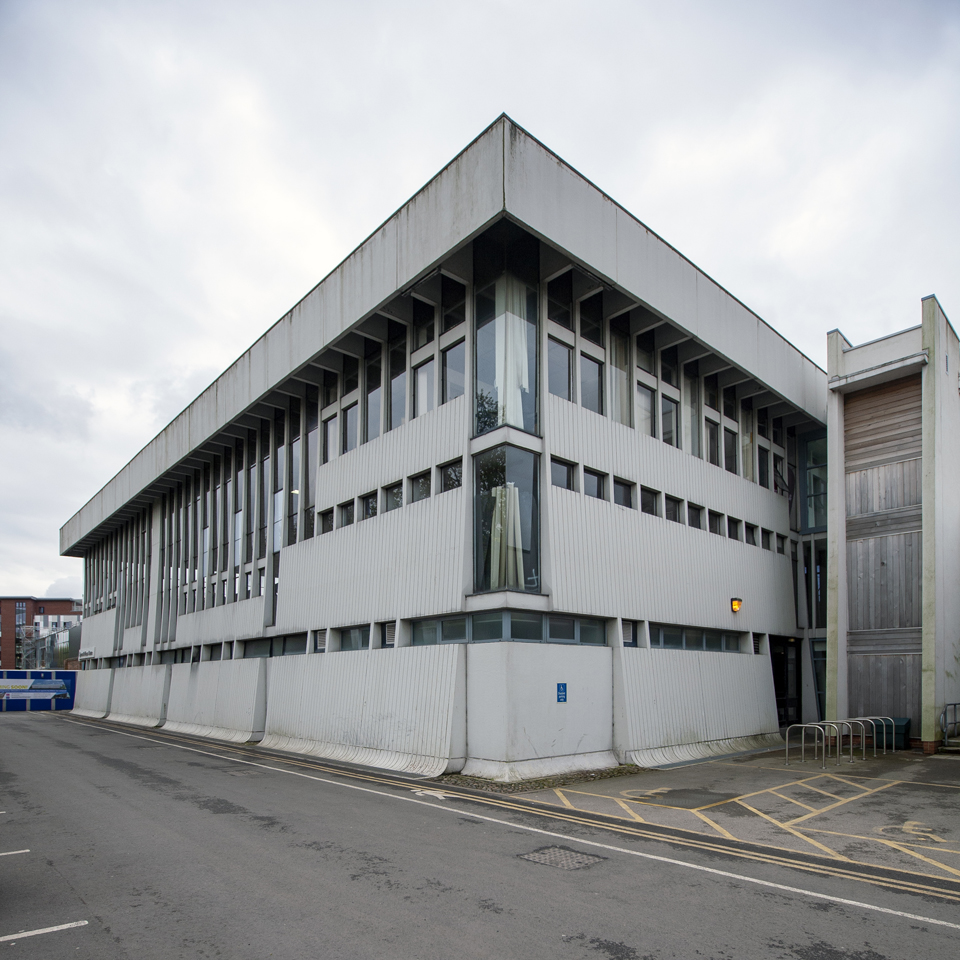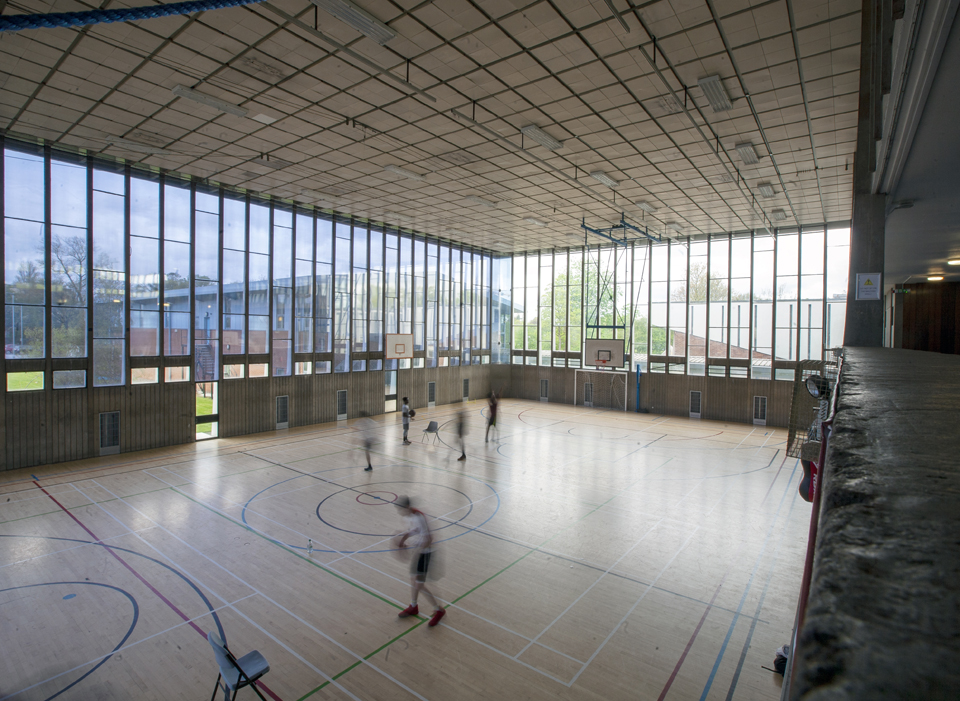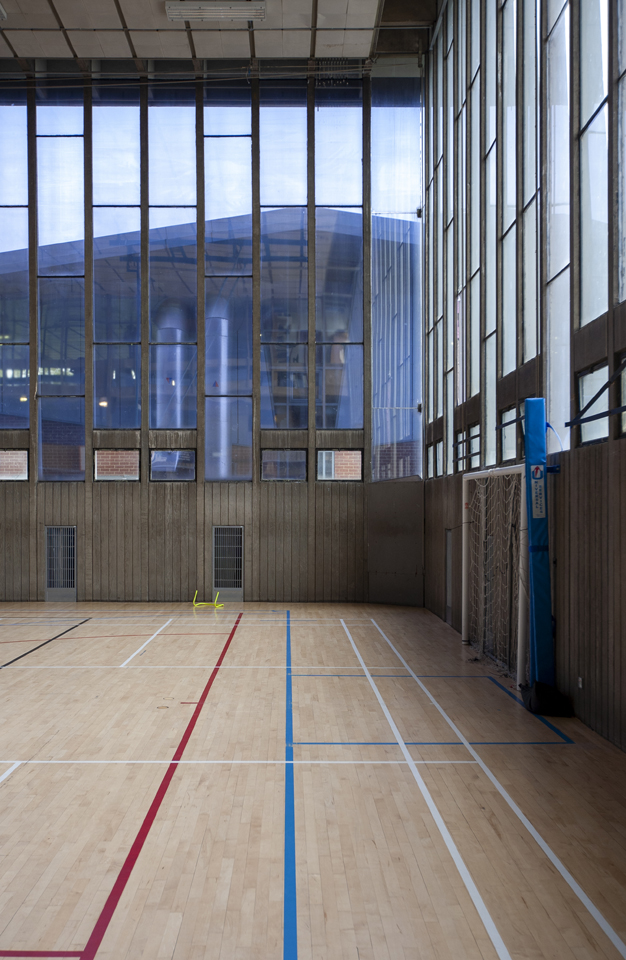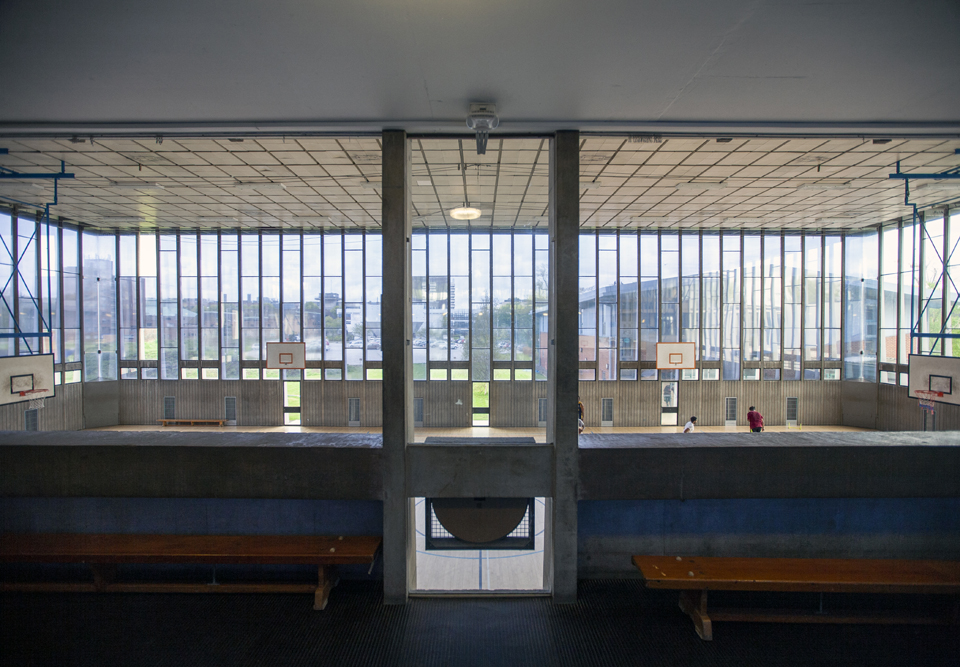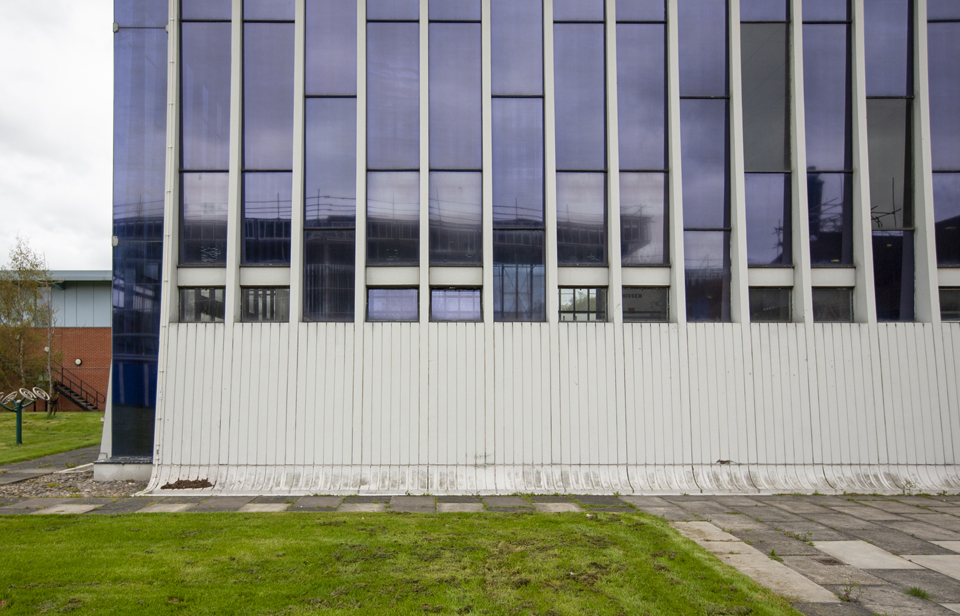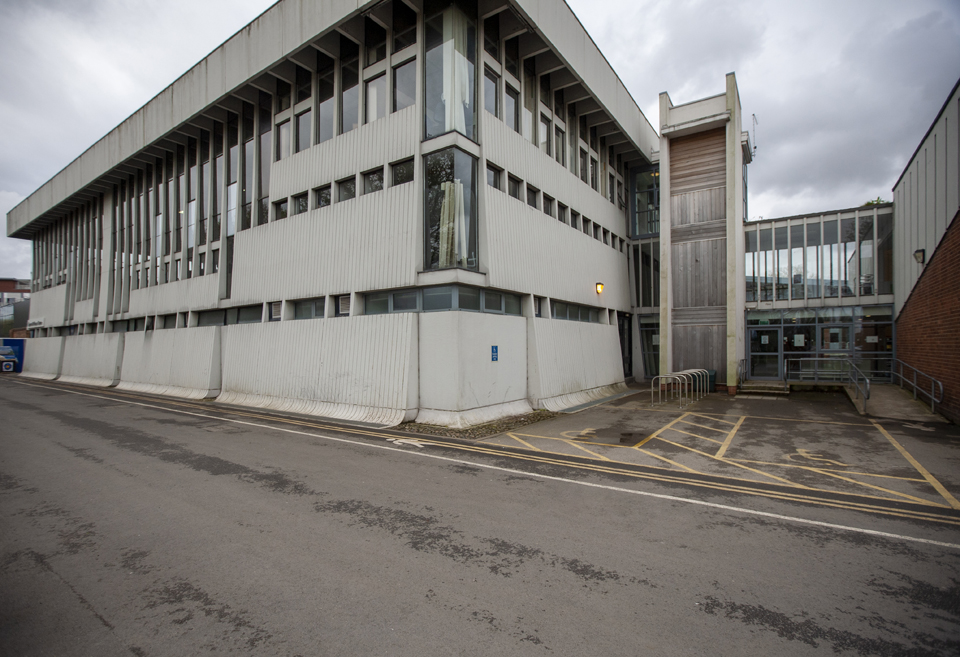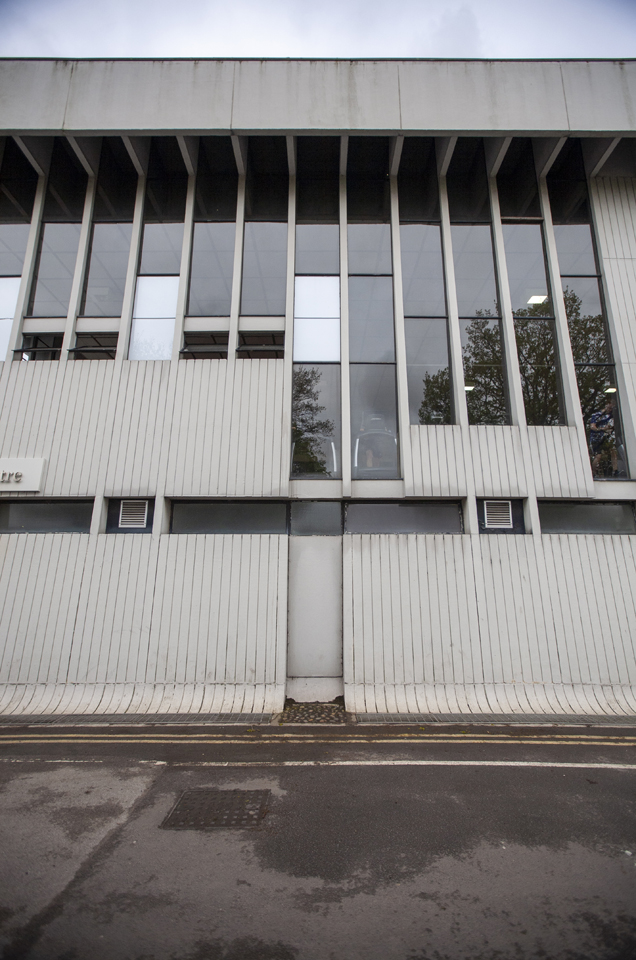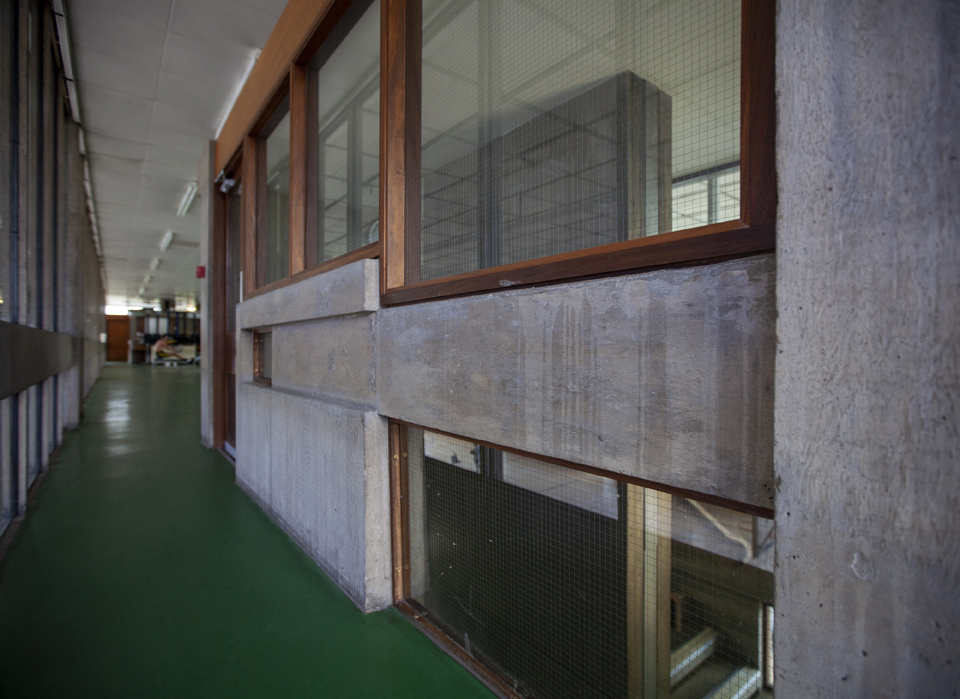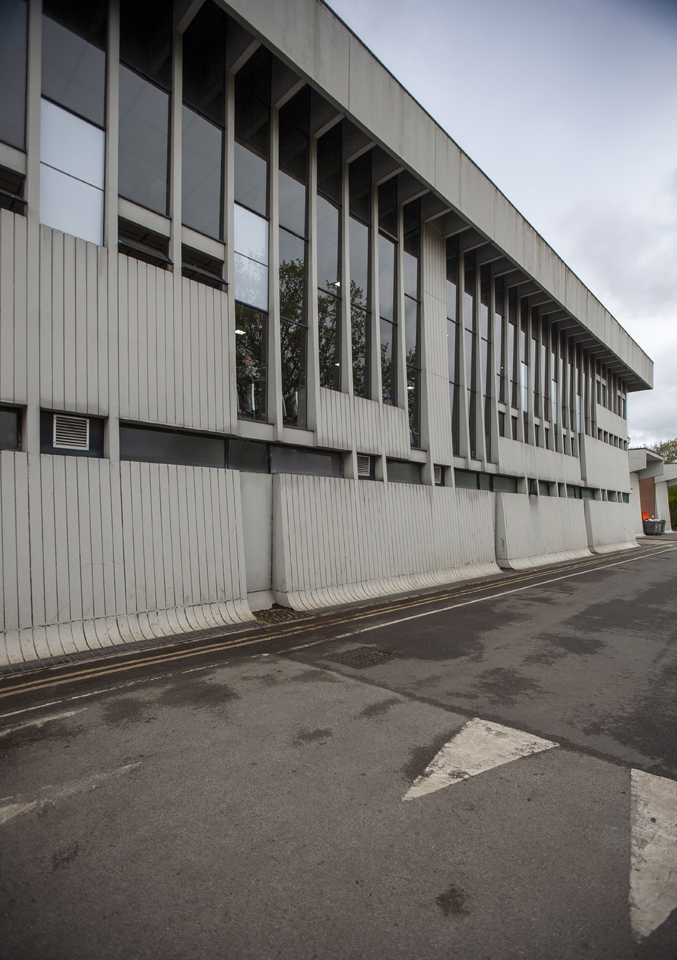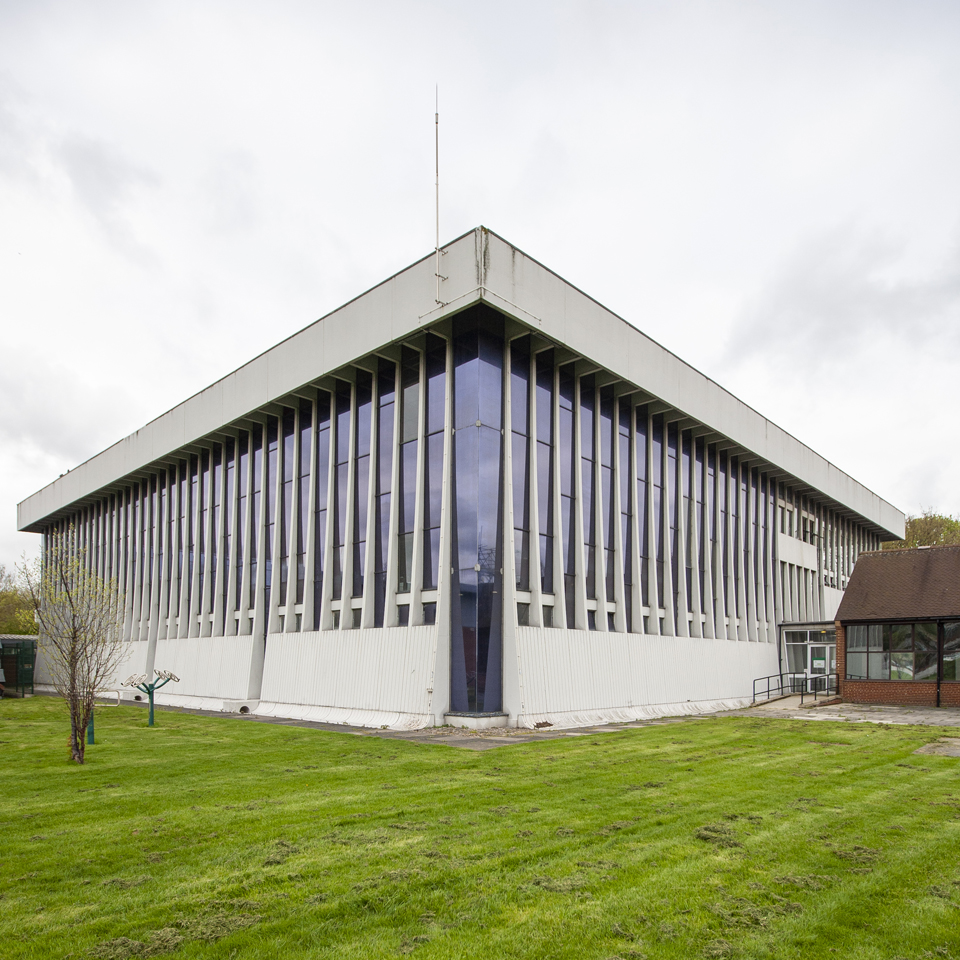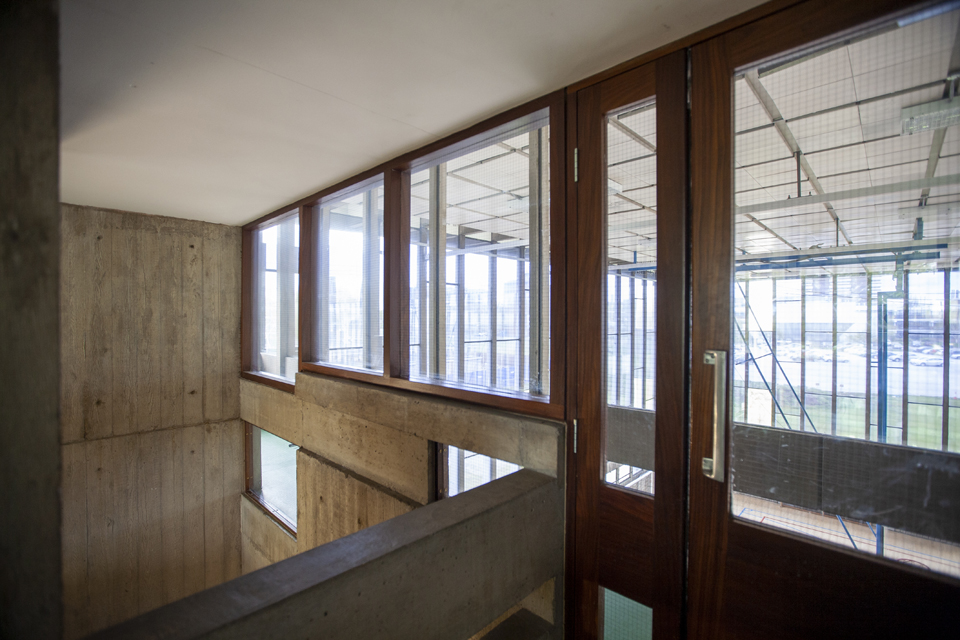Sports Centre
1965
Womersley’s appointment by the University of Hull was, like others, influenced by Leslie Martin. Martin was the University’s consultant architect for their development plan that endorsed commissions to ‘young architects of promise’, especially for smaller projects. This was not a small project for Womersley though and its slow progress and ‘dispiriting building by stages’ made for lean times in his office. Between January 1961 and October 1962, the scheme, scheduled as the first phase of a larger sports complex to include a swimming pool and cricket pavilion, was designed up to tender stage. Construction, coordinated by project architect Paul Jones, began in 1963 and was completed in 1965. Womersley disclosed an admiration for Kenzo Tange’s Olympic buildings in a lecture to the RIBA and there is more than a hint of such in this building. The close concrete mullions with tapered section and curved bases that carry a gridded prestressed roof structure are one such reference. The tight spacing of the mullions also obviated the need for piling and rebates carried toughened float glass without the need for frames. A neatly detailed perimeter drainage channel at the foot of the columns collects and discharges the runoff from the facades. This efficiency gives the building an elegant appearance and an uncommon transparency for a sports hall. It is also a symptom of Womersley’s preference for structural honesty as a generator for appearance. In this case he wanted to leave the roof structure visible from the interior, but the practical demands of the space made that impossible. However, by glazing between the columns all the way to the underside of the roof, the relationship between the two parts was outwardly articulated. The interior planning was organised around a spine for storage, circulation and viewing. The three-storey volume of the main hall was to the south and to the north changing rooms and gymnasia were stacked on top of one another (although the changing rooms at ground floor were initially a budgetary sacrifice and were left until a second phase of construction along with 4 additional squash courts in 1967). Later buildings that were not part of the masterplan as originally conceived have chipped away at the buildings presence and integrity, but, nonetheless, it was listed Grade II in 2016.
